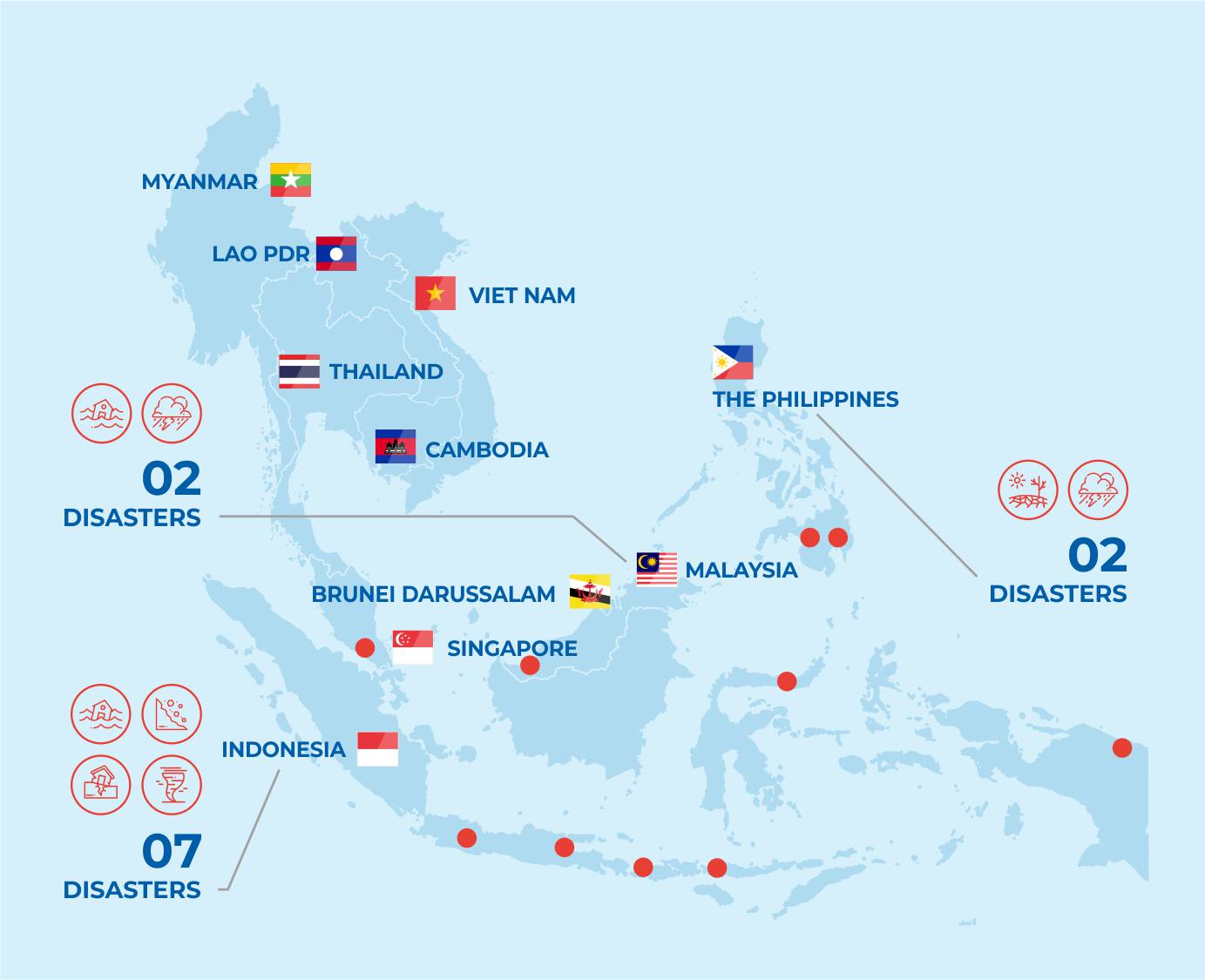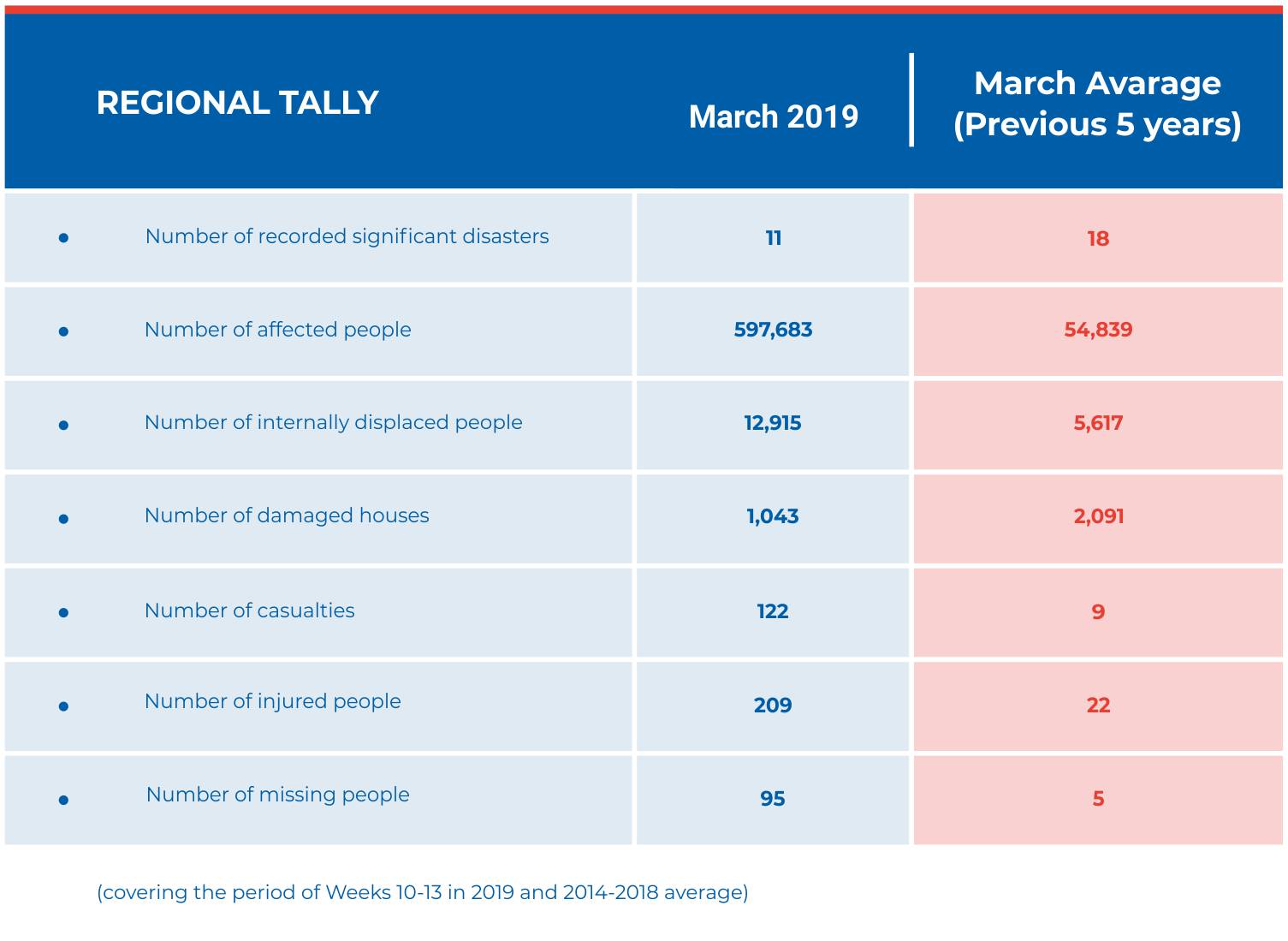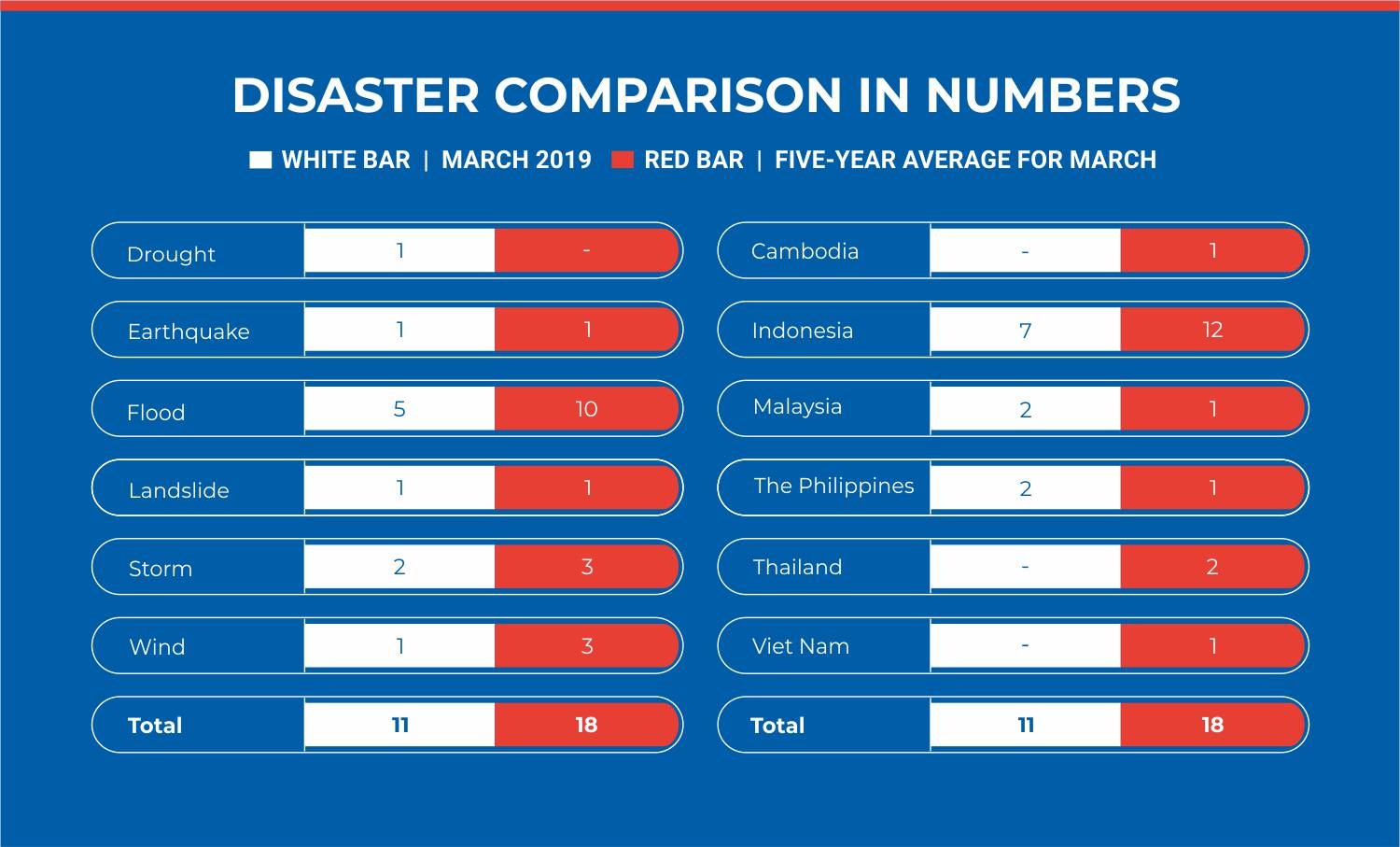
MONTHLY DISASTER REVIEW AND OUTLOOK
MARCH 2019 | DISASTER MONITORING & ANALYSIS
(DMA) UNIT, AHA CENTRE
GENERAL OVERVIEW OF MARCH 2019
March ended the first quarter of 2019 continuing the trend of lower disaster occurrences compared to its five-year average. This month registered 61% of its five-year average number of disaster occurrences, similar to the statistics of January 2019. However, the number of affected persons was more than 10 times the average for March, and the number of casualties is more than 13 times more than the previous 5 years on average. These considerable differences were driven by two significant events – the drought in North Cotabato, Philippines and the flooding in Sentani, Indonesia. 60% of this month’s affected population is attributed to the Philippines drought, particularly due to the drought’s extensive geographic coverage. On the other hand, 92% of this month’s casualties resulted from the flooding and landslide in Sentani, Indonesia. The primary factor for these figures can be attributed to the timing of the flash flood, which happened at night while most of the residents were sleeping in their homes. This highlights the importance of availability, accessibility, and utilisation of early warning information to drive early action.
Geophysical disasters decreased in March compared to the previous 2 months, with only 23 earthquakes of magnitude 5.0 and above recorded in the region. Of these recorded earthquakes, only one resulted in loss of life. A shallow earthquake with magnitude 5.4 struck north of Selong City in East Lombok Regency, Indonesia. This resulted in damage and collapse of structures in the area, as well as falling rocks and debris at the nearby Tiu Kelep Waterfall in North Lombok Regency, which resulted in the deaths of two tourists visiting the site. This highlights the nature and need for multi-disciplinary and cross-cutting approaches in disaster management
SEASONAL OUTLOOK
The ASEAN Specialised Meteorological Centre reports the end of the Northeast Monsoon, and that onset of the inter-monsoon period is taking place. This is the transition phase between the Northeast and Southwest Monsoons, which is characterised by increased occurrence of scattered rain showers in the region. While seasonal forecast models point to a general increase in rainfall frequency, and a geographic expansion of rain showers, precipitation on the other hand ranges from normal in the Philippines to below-normal in eastern Indonesia and the northern ASEAN region. While the amount of rainfall may not be considerably large, the increase in exposure may still trigger flooding and rain-induced landslides.
Statistically, large-scale disasters that require regional-level response occur during the second half of the year. At the end of 2019’s first quarter, the AHA Centre is wrapping up its preparatory activities for emergency response and other events. This includes the updating and preparation of Common Operational Datasets, 11th ASEAN-ERAT Induction Course, the preparation for the launch of the DELSA satellite warehouses and many more. Activities such as these help prepare the AHA Centre, and the region, to respond to disaster whenever and wherever it may strike.
Data Sources: ASEAN Disaster Information Network, ASEAN Specialised Meteorological Centre
Written by : Lawrence Anthony Dimailig
DISCLAIMER
Disclaimer: AHA Centre’s estimation is based on data and information shared by National Disaster Management Organisations (NDMOs) and other relevant agencies from ASEAN Member States, international organisations and news agencies. Further information on each recorded-significant disaster, description and detail of data and information are available at: http://adinet.ahacentre.org/reports.



